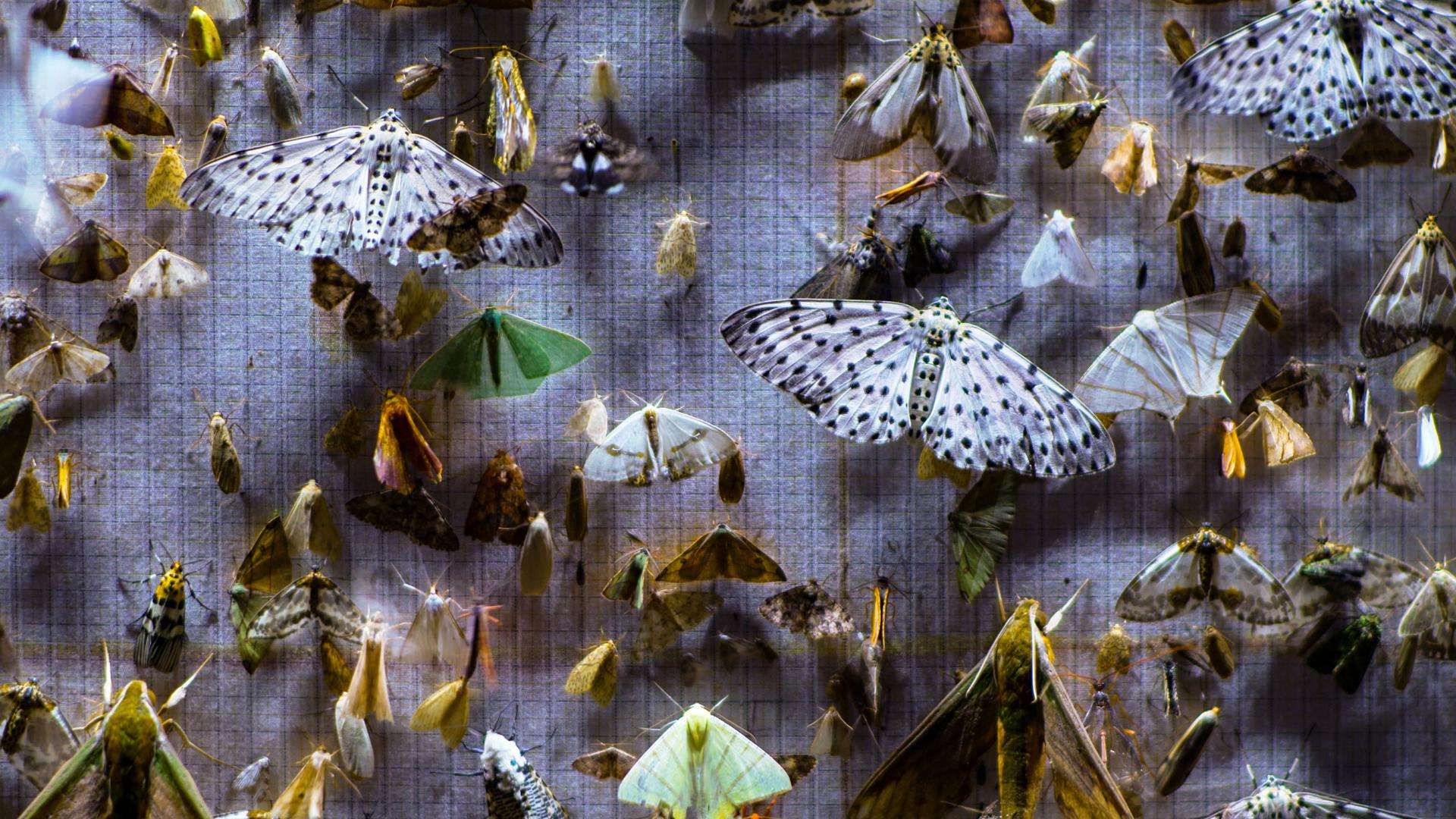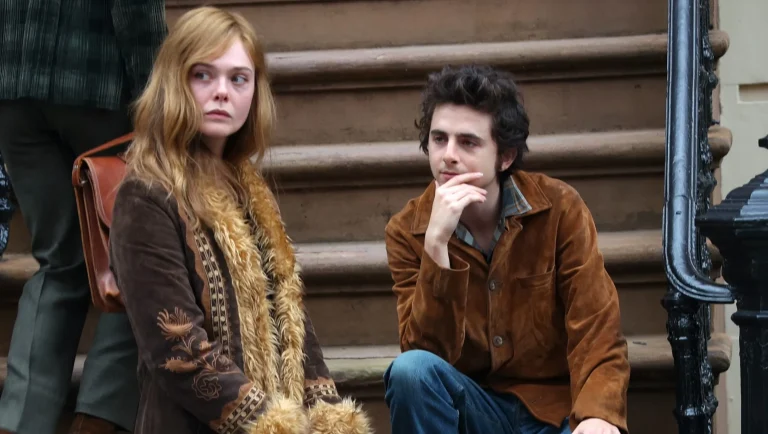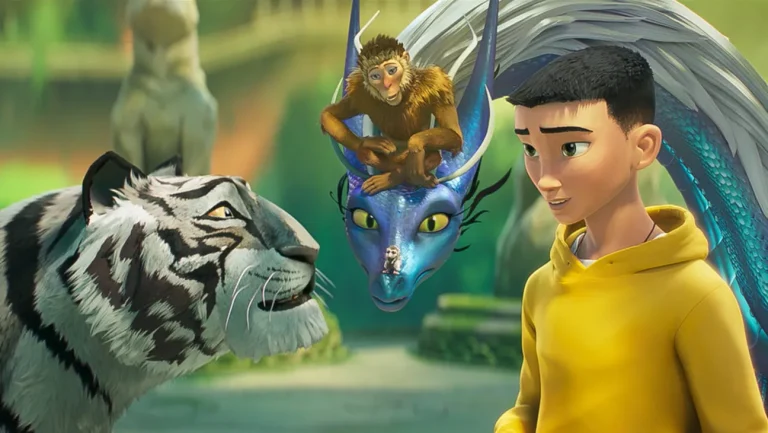The universally acknowledged beauty of butterflies, along with their vibrant colors, gives me the impression that they are well-loved by the majority. People associate butterflies as a wonder of the earth, possibly matching with peacocks as elegant beings. However, when it comes to moths, the perception is the opposite, as some even link them to misfortune. Regardless, a stunning variety of moths will be brought to the forefront of global consciousness in the 2024 documentary film “Nocturnes.”
The name of the film’s production company, “Metamorphosis Film Junction,” immediately piqued my interest because it alludes to the documentary’s central theme of transformation. This film follows an ecologist named Mansi and her assistant, Bicki, as they embark on a nighttime expedition in the East Himalayas in pursuit of a specific moth. Mansi is an expert on the moth ecosystem, while Bicki is a local indigenous community member with a keen interest in moths. The deal here is that most viewers would be more connected to Bicki than Mansi, as he represents most of us unfamiliar with moths and their traits. His questions and inquiries condense all the thoughts and feelings we might have along the documentary’s journey. The process of how Mansi and Bicki conduct the moth screening research and the specific methodologies cover the narrative.
Director duos Anirban Dutta and Anupama Srinivasan take us on a tour to show us a wide variety of moths, allowing us to learn about their unique survival strategies, physical traits, and species. Studying Hawk Moths seems to be the objective here, but we are taken on this surreal trip to witness every moth possible. From wing patterns to size variations and color combinations, the diversity of moths and their specific characteristics are shown in a guided manner. Anyone can enjoy Mansi’s detailed narration of moths, regardless of their level of scientific knowledge. She offers insightful monologues meant to be absorbed slowly to explore and clarify all the processes and procedures involved in the study.
One of the plus points of “Nocturnes” is the sound design. The enchanting melody and illuminating sounds of the forest mingled with the buzzing of insects, particularly moths, is very mesmerizing. The enveloping ambient sound, reminiscent of “Dolby Digital,” helps viewers connect with the ecosystem of nature. It would make you question if you’re actually at the study location. A simple act of listening to the moth’s wings flutter generates a calming effect, bringing us back to nature and transplanting us from our urban surroundings. Maybe the goal is to let ourselves be wholly absorbed by this realm of flying wonders.

The researchers’ struggles to commit to their work outcomes are also highlighted. Every obstacle that made the study groundwork onerous is shown to the audience, from bad road conditions to the absence of Hawk moths. The filmmaker duo makes sure that we comprehend the hardships that these moth seekers face, which begin to impact their personal lives as well.
This is similar to the approach from the documentary film “All that Breathes” by Shaunak Sen, which won the Golden Eye award at the Festival de Cannes 2022. It more or less covers the importance of personal space to fully concentrate on their mission, which is not an easy process. Yet, the sense of fulfillment that comes from achieving the mission is definitely worth the effort. This is seen in one fascinating moment where the presence of a moth on the screener layout is juxtaposed with Bicki’s face, where a glowing light is shared among them.
Nevertheless, gazing into these moths prompts an array of important questions. “What is causing the decrease in moth variation over time? Must one separate oneself from one’s loved ones in order to devote sufficient time and energy to their passion? Has deforestation led to significant changes in moth activity? Is there a global shortage of experts who study moths? Why isn’t teaching about moth activity emphasized in the curriculum? This leads to the more crucial question – why did we not discover a plethora of moth facts all these years?
The documentary gradually conveys a serene atmosphere of cozy forests through its stunning cinematography. It reminded me of the 2022 Rotterdam-nominated short film “Murmurs in the Jungle,” where the visuals tell a story with a hidden message. The somber landscape almost begs us to tune in to its nuanced blend of sorrow and beauty. Mostly, the co-directors let the visuals do the talking, which complements the documentary’s theme.
“Nocturnes” won the World Cinema Documentary Special Jury Award at Sundance this year. The documentary showcases a diversified and guided presentation of moths that offers a retrospective view of their hidden mysteries and survival characteristics. It’s magical, imperative, and gradually entwines with the viewers’ emotions. What really stood out to me here was the unspoken bond of beauty between butterflies and moths. Perhaps due to the adverse effects of climate, in the not-too-distant future, the only evidence of moths’ existence will be through virtual museum brochures. The documentarians warn us that it might be in our hands to make a difference, and I couldn’t agree more.


![Widows [2018]: ‘MAMI’ Review – Suffers from Incoherent Narrative](https://79468c92.delivery.rocketcdn.me/wp-content/uploads/2018/11/widows_2018_review_highonfilms-768x384.jpg)




